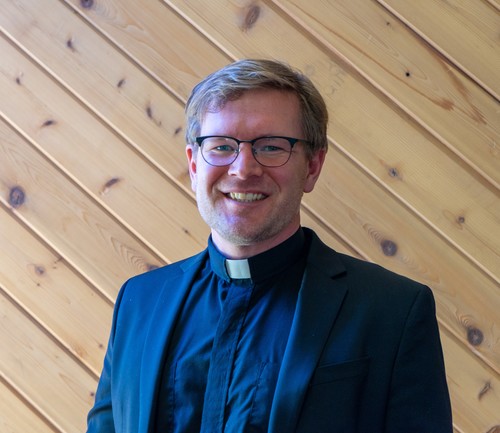By Dane Neufeld
O ne of the proposed pathways for consideration arising from the Primate’s Commission concerns governance and synods, and their place within the broader life of the Canadian Church. This is of course, an immensely complicated question that could be engaged from a number of different trail heads or vantage points. Peter Elliott, the chair of the commission, recently wrote a thoughtful essay, “The Evolution of General Synod,” which seems like an appropriate place to enter the conversation.
I suspect there are not many people in the Church today who could offer this kind of historical and experiential summary of General Synod, its early history and its more modern attempts to understand and define itself. Elliott begins with the observation: “Strategic planning processes, beginning in 1968, sought to bring clarity to General Synod’s purposes, goals, priorities, and structures. Each planning process achieved some measure of success, but the complexity of Canadian diversity and geography made achieving and holding consensus difficult.”
Though General Synod may have begun with the motto “not for harmony but for strength,” Elliott charts the process, beginning in the 1960s, by which General Synod became increasingly detached from the grassroots of the Church in its pursuit of centralized programs and initiatives (8). Though well intentioned, Elliott argues, this particular problem was already identified by leadership in the 1990s. It continued to be identified by Church leaders in the various reports and vision documents that were drafted, accepted, and then largely forgotten up until today.
The “strength” of General Synod, no longer proportionate to its means, had become a burden for the Church, and the tensions and divisions of the last decades were amplified by this top-heavy structure. Rather than strengthening our common mission, General Synod became the forum for dispute and adversarial politicking that cast a dark shadow over the Church, in part because of the enormous stature it had assumed. Elliott’s observation that “General Synod was created to be the weaker partner in a strong alliance of dioceses” (25) is deeply important, and likely one that the Church has now started to learn through decades of hard experience.
Elliott’s essay strings together the false starts, interrupted initiatives and now forgotten reports that attempted to cobble together some kind of administrative and spiritual continuity in our Churches over the decades. The somewhat abstract portrait of the Church in these reports illustrates the challenge inherent in a common ecclesial life in a broad-reaching place like Canada. Especially now, in a time of decline, we can hardly devote the energy or resources to remembering what was determined or aspired to 10 years ago, much less 20 or 30. We are now at a stage where we are trying to imagine how we will manage to maintain our basic functions. Like trying to replace a long-time envelope secretary or parish treasurer, those of us with decades of ordained ministry ahead of us cannot help but wonder how and who will be able to keep this structure running.
But surely there is still a place for the periodic gathering of God’s people from across the country, to come together in love and fellowship, to seek God’s counsel, to pray, worship and discern the body as God’s people. The divisions and the disputes of the past decades have weakened and wearied the Church to such a degree that the idea of “strength” of any kind evokes another time and another world. Perhaps there is a gift in this time of reckoning with our weakness, as if we have suddenly grasped the far greater danger that awaits us all.
In the final chapter of his treatise On the Holy Spirit, St. Basil observed the Church with sorrow: “That men are all smitten with the incurable plague of mad love of glory, so that they do not cease from their struggle each to get the better of the other, while their ship is actually settling down into the deep.” (134) Basil included himself in this indictment. Even as he defended the truth of the gospel, he could sense the way in which his own heart had become deformed by the spirit of controversy. Our struggles over resolutions, our efforts to secure elections and desire to control legislative outcomes, all while the ship is sinking, will likely appear more oblivious to the greater dangers we have been facing with every passing year.
Silence is surely better than vying against one another, than devoting all our energies to winning and performing on the highest ecclesial stages. At the heart of the matter, for St. Basil, was a failure of Christian love: “The love of many has waxed cold; brotherly concord is destroyed, the very name of unity is ignored, brotherly admonitions are heard no more, nowhere is there Christian pity, nowhere falls the tear of sympathy.” (138) Though he believed in the theological convictions he sought to articulate and defend, his sense that genuine Christian love was “nowhere” to be found was surely a devastating discovery.
After General Synod 2019 I could not help but wonder if we would have all been better off if we had simply stayed home. I agree with our indigenous brothers and sisters, that there is something seriously wrong at the heart of our gatherings, something inimical to common Christian council and charity. Whether that is a function of the letter in our canons, or the spirit in our hearts, I cannot really say. We need a space to freely disagree and to delineate contrasting visions, and efforts to dampen or control disagreement seem often to backfire. But it has also seemed the case, that General Synod was just not capable of comprehending and weighing the full force of two competing theological visions, without releasing the wild and distressing spirits of conflict.
Whatever General Synod is in the next few years, it is hard to imagine how it could survive as an ongoing forum of dispute and competition. It would be good as Canadian Anglicans to pay attention to recently published Nairobi-Cairo Proposals released by IASCUFO (Inter-Anglican Standing Commission for Unity, Faith and Order), which issue a call to unity to the Anglican Communion as a whole. This is not a benign unity that papers over the deep divisions we face, but one that calls us to persevere in the face of them. The authors of the report ask: “What might it look like to be “completely” humble, gentle, and patient, “bearing with one another in love”? How might we “make every effort to keep the unity of the Spirit through the bond of peace” (Eph. 4:2-3)? (¶45)” In answer to this question, the report identifies unity and our common life together as central to the mission of the Church: “A dogged refusal to give up on each other, to remain in relationship despite deep and significant disagreement, can be a remarkable witness to the power of Christ to bring unity in a divided world. (¶45)”
Though General Synod was created to aid and resource the mission of the Church, it is difficult to avoid the conclusion that many of its mission initiatives have been frustrated and hindered by our common unwillingness to embrace Christ’s fundamental calling, to love one another as Christ loved us. Which is to say, we have been called to love one another by denying ourselves and taking up our cross, by praying for our enemies and blessing those who persecute us. As in every circumstance the Church finds itself, there is no other road to faithfulness, than the road that leads to the cross.
If the present initiative to reorder or streamline the governance of the Church has even a whiff of partisan motive, backroom power consolidation, or self-interested agenda, it seems very unlikely it will amount to anything good. Removing or reducing levels of governance, for instance, could, if not carefully undertaken, reduce participation and representation across the country, and place more power in the hands of fewer people. Discontinuing relatively low-cost Provincial synods, for example, is likely to exaggerate the distance between the centre and the grassroots. Furthermore, if there is any sense that parish- and diocesan-level ministry is being sacrificed in order to strengthen the centre, or that northern ministries are being curtailed in order to fund priorities in the south, this moment in the Church’s life will become another footnote to the story of our decline.
Elliott’s essay concludes with a suitably sober and humble evaluation: “Membership and participation in the Anglican Church of Canada has been in decline since the late 60s. In the last two decades this decline has become precipitous. Every strategic plan has included steps intended to arrest this decline. None has had any demonstrable impact” (25). It seems appropriate that Canadian Anglicans consider structural and procedural adjustments in light of this seemingly intractable reality. It is also encouraging to hear broader calls from Church leaders across the country to think and engage more seriously in evangelism and mission. But all of these endeavors will fall short of their desired ends without a renewed commitment, amid our divisions, to the self-emptying and sacrificial love of Jesus Christ. Thankfully, it seems there is a growing awareness and desire in our Church to heal and restore what has been lost amid our disputes. May the Holy Spirit fan these flickers into flame.

The Rev. Dr. Dane Neufeld is the incumbent of St. James, Calgary, AB and the Chair of Anglican Communion Partners in Canada.

